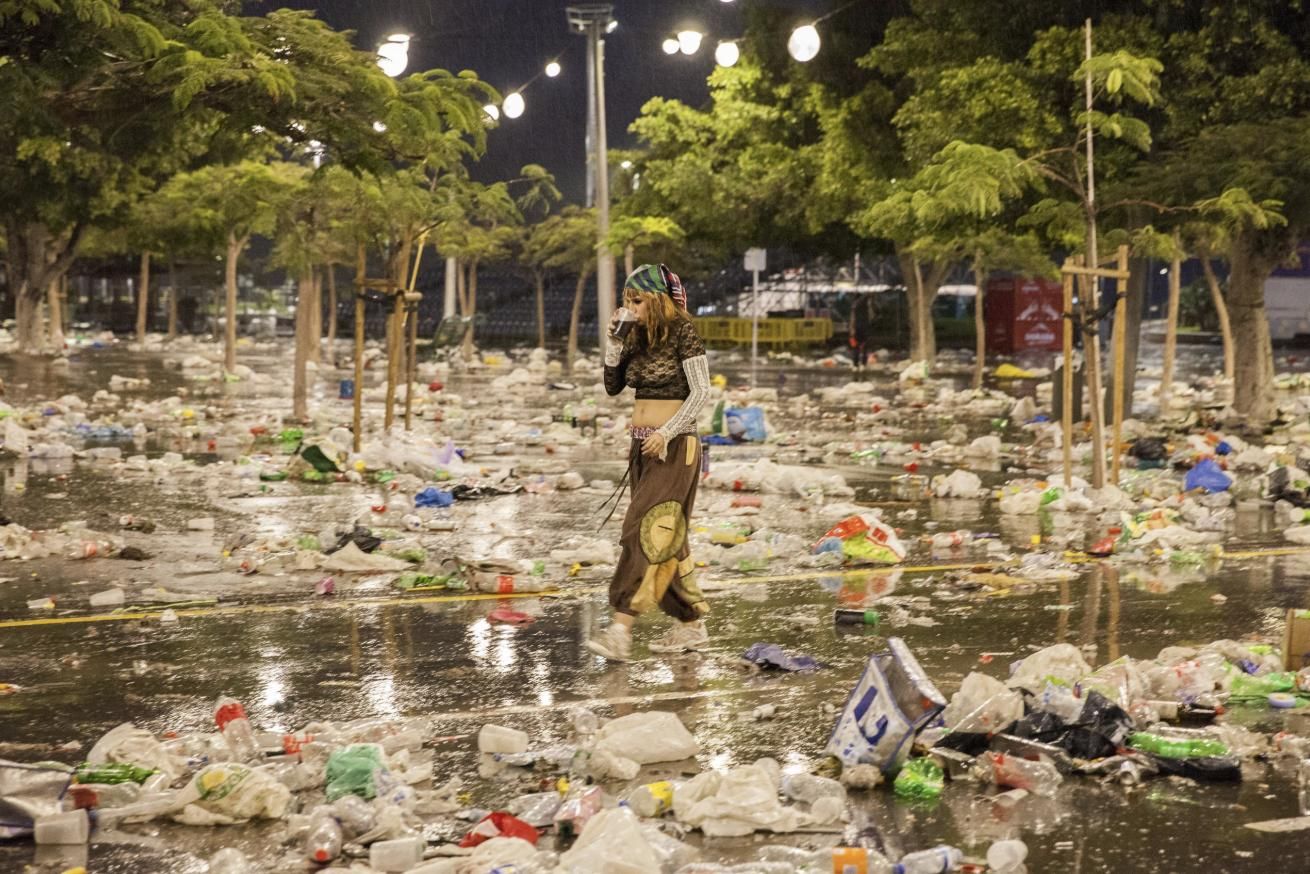The artist from Tenerife, Zireja (Irene Sanfiel Arriaga), shares on her social media compelling images showing a “sea” of waste inundating the streets of the capital following the Carnival nights, which over the past decade has resulted in more than 3,700,000 kilos of rubbish.
The Carnival of Santa Cruz de Tenerife is globally famed for its exuberance, colour, and extensive participation; however, the artist highlights a more sobering reality that is becoming increasingly concerning: the continual rise in waste produced during the key festivities.
Citing official statistics, Zireja clarifies that since 2015, the total volume of refuse collected during these events has surpassed 3,700,000 kilos, thereby highlighting a significant environmental issue that escalates year on year.
The quantity of waste generated by the Carnival in Tenerife’s capital equates to the annual waste produced by approximately 6,800 individuals across the Canary Islands, she notes, a reality depicted in her virtual photo exhibit “a decade portraying the hidden side of the Carnival of Tenerife”.
She remarks that in 2017, municipal services collected around 407,160 kilos of litter throughout the Carnival festivities, with this figure gradually increasing, culminating in 528,310 kilos in 2018, and staying above the 400,000 mark up until 2025.

Altogether, from 2015 to 2025, over 3,700 tonnes of rubbish has amassed during the Carnival celebrations in Santa Cruz, and the artist reminds us that this accounts for an 8-week period (considering that the Carnival takes place over one week every year).
According to the INE, Zireja adds, the Canary Islands ranks as the third region in Spain in terms of waste generation per inhabitant.
She notes that the peak days for waste accumulation align with the most popular events of the Carnival: the night of the main Saturday and the Monday preceding Carnival Tuesday typically mark critical periods.
On those days, iconic streets like Anaga Avenue, Plaza España, and the quadrilateral area transform into genuine “makeshift landfills.”
The artist emphasises that this sustained level of waste generation presents not only an environmental challenge but also an economic one, as extraordinary cleaning efforts during these times entail significant expenses for municipal budgets, with costs rising each year due to the need for additional personnel and specialised machinery.

She stresses that the environmental impact is particularly alarming: single-use plastics (containers, bottles, and packaging) account for a substantial percentage of the total waste collected, and these materials take decades to decompose, leading to adverse effects on the local ecosystem, particularly affecting nearby beaches and protected natural areas.
It is important to recognise that, being an island, waste management involves the establishment of disposal sites for burial and the management of recycling, necessitating transportation to the mainland.
Furthermore, it is notable that the vast majority of refuse collected during Carnival is not recycled, resulting in it being buried in landfills within the municipality of Arico.
In light of this scenario, Zireja states that specialists in environmental and community matters are calling for urgent actions to reverse this negative trend, recommending a reduction in the excessive use of single-use packaging that is brought into the Canary Islands.

They further advocate for effective campaigns to encourage the reduction and segregation of waste among attendees, alongside a considerable increase in mobile clean-up points distributed throughout the city during festivities, complemented by enhanced public awareness regarding the environmental impact created.
They also suggest fostering local inquiry groups to address community-specific waste management challenges.
Additionally, they stress that a collaborative commitment is required among public entities, Carnival organisers, and the public, as the artist notes, “only through such cooperation will it be feasible to uphold the international reputation of the event without sacrificing environmental sustainability or jeopardising the tourist and ecological future of Tenerife.”

















Hi from Scotland.. I have visited your island several times in the last few years an have fallen in love with the island… Never been at Carnival Time But I cannot understand why people are so lazy when it comes to bining there rubbish. Maybe the food places should have people out amongst the crowds picking it “” mind people should do it themselves “” as many of these places have to much packaging for food’s and drinks…Fining people also.. It’s such a busy place at that time maybe groups of volunteers from all parts of the community and businesses come together at Carnival time and help with the clean up.. I hope solutions can be found as I hope to visit the island when I can.. Blessings From Scotland….
Thanks for the comment Patrick.